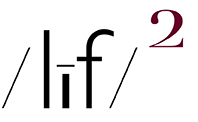all photos (embiggenable)
added 4 new photos to my poles body of work (on my WORK page)
ON MY LAST ENTRY, RE: Blurb magazines, Dennis left a comment / question:
“In an earlier post, you commented the Blurb was not your go to book maker. Has that changed? Who is/was your favorite?”
My long term POD photo book source is Shutterfly. It continues to be so for “showcase” photo books of my favored bodies of work cuz they offer-don’t know if any other sources do-6-color printing. Their quality of materials and book binding is very good and, if there is a problem with the results, they reprint without question.
That written, I suspect-with good evidence-that most POD photo book sources use a small number of printing sources. A practice which results in pretty consistent quality across the board. In any event, in many cases, the choice of which source to use for POD photo books comes down to their book making software. Some are quite clunky and non-intuitive. Also worth considering / exploring is the fact that some POD sources offer products-of which Blurb magazines are a good example-that others do not.
Re: book making software: Shutterfly-like most sources-allows creators to make books with their software in a standard browser window. Blurb requires a creator to download their software onto the creator’s computer. That written, in any event, I never use the source’s layout patterns. Instead, I set up my books with blank pages and place my page files-made to the exact page size (to include a white border and any text)-full-bleed, aka: out to the page edges, on each page.
Re: making full-bleed page files: I make my page files in Photoshop. This procedure gives complete control over all of the layout possibilities: photo size, placement, number of photos per page, size / color of border (always white for me), text typeface / size / placement / color and quantity,
All of the above written, let me suggest, yet again, that if ya ain’t making prints, ya ain’t making nothin’. Ok, I get it, some of you might not have enough wall space to do your body of work justice so that’s why the photo gods gave us books. In my case, I currently have 70 POD photo books of my work-all shapes and sizes. That is in addition to the nearly 100 prints I have on my walls. You might conclude that I like displaying and looking at my work.
But here’s the thing I like about books; they’re portable. I can take them anywhere and share them with any one I choose. And, in the case of Blurb magazines, they are so inexpensive that, if someone likes them, I can give them away. That is to write, I am able to put my work in front of other people’s eye’s and, if they desire, into their life, to have and to hold.


